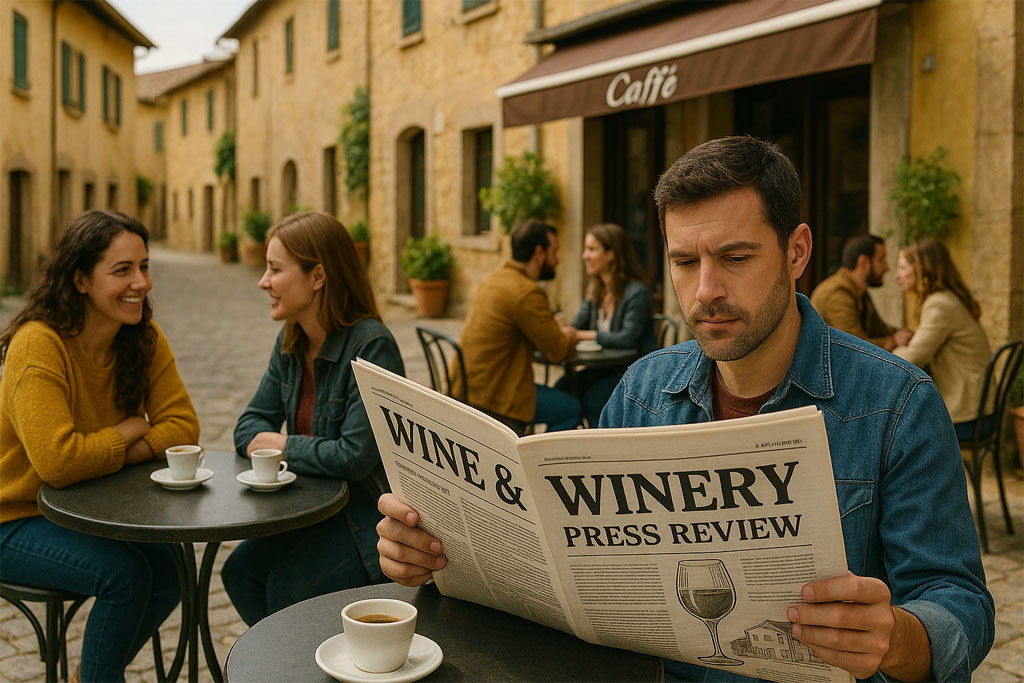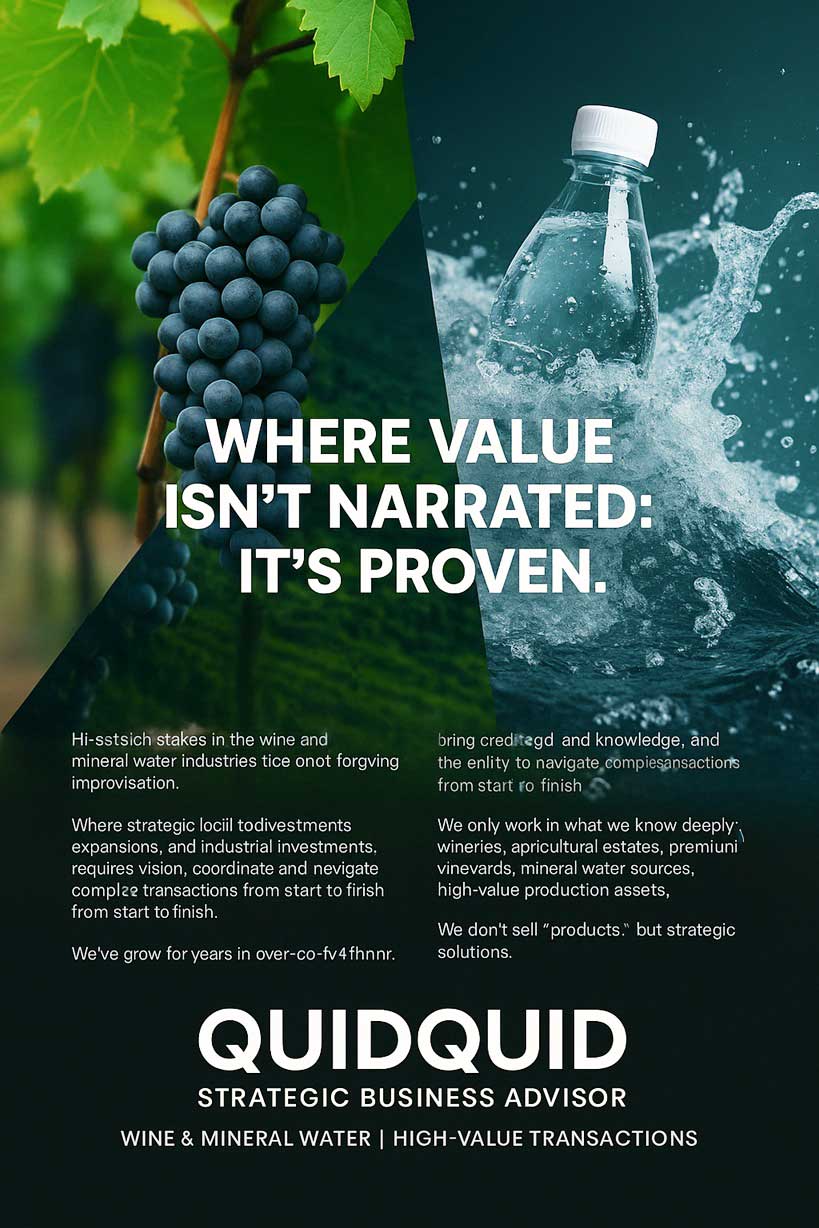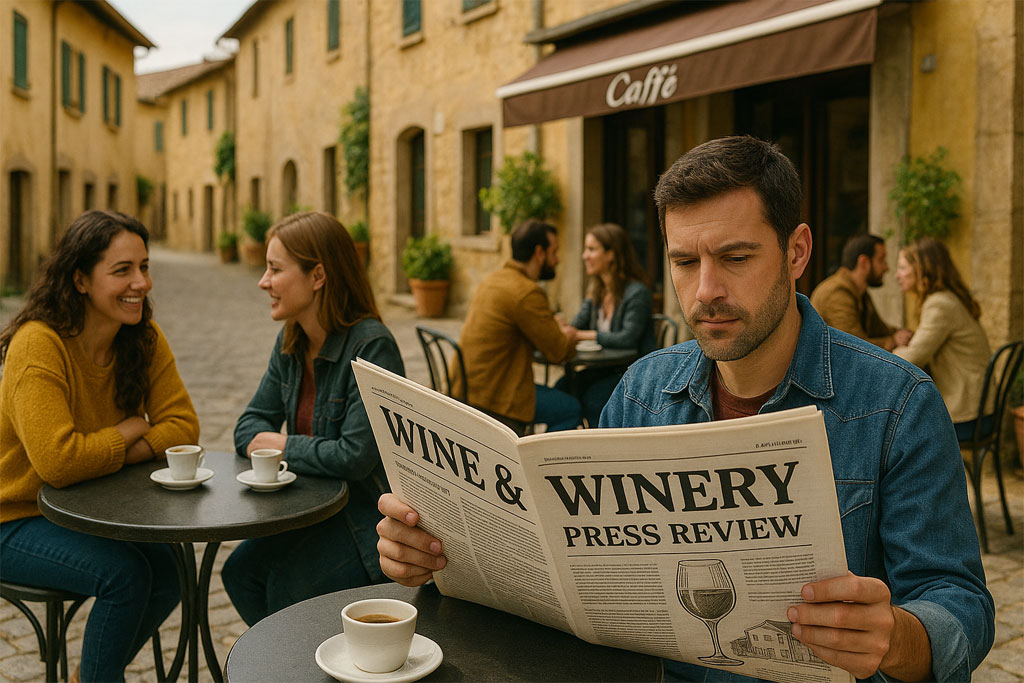Wine news, Italian wineries and wines.
A rich day, bringing together the real economy, territorial identity, European policies, wine culture, and local events.
Italian wineries
Mezzacorona grows despite the global context. In 2025, the Mezzacorona Group reported a turnover of over €213 million (0.32%) and a net profit of €1.74 million. Over 80% of sales are exported, with a strong exposure to the United States and Germany. This result confirms industrial solidity and a long-term vision, despite geopolitical and trade tensions.
The Parish Vineyard and the Revitalization of Ruchè. Ruchè di Castagnole Monferrato is back in the spotlight thanks to Luca Ferraris’s project, which promotes the Parish Vineyard, the only cru recognized by the Ministry. This is a prime example of how historical identity and entrepreneurial vision can become a regional economic driver.
Terre d’Oltrepò Winery: Deposits guaranteed, negotiations begin. Payments of the 2025 deposits to members have been secured, while a possible sale is taking shape. The Lombardy Region is monitoring the liquidation process, reassuring the 500 affected suppliers.
Cantina di Ramuscello: second edition of “Vino Terre.” The 555 bottles of Refosco dal Peduncolo Rosso DOC Friuli 2023 were presented, aged in a pit in the vineyard and accompanied by a powerful cultural and artistic project. An example of experimentation that unites territory, wine, and storytelling.
Vis and the Trentino Doc Riesling 2024 The Trentino cooperative, with 400 members and 400 hectares of vineyards, tells the story of a subalpine territory where altitude, climate and winds become key elements of stylistic identity through the 2024 Riesling.
Le Morette: Lugana in solidarity for the third year. With the Lugana DOC Mandolara 2024, the Peschiera del Garda winery renews its support for the Più di un Sogno Foundation, combining winemaking elegance and social responsibility.
Siddùra, Gallura that speaks to the world. The Sardinian winery consolidates its premium positioning on international markets by focusing on the uniqueness of its Vermentino di Gallura DOCG and a strong, coherent territorial narrative.
Italian wine and Italian oenology
US tariffs: Trentino exports down 8%, but the sector reacts. US trade policies penalize some denominations (Pinot Grigio, Pinot Noir, Chardonnay), but Trentino producers are focusing on strategies to differentiate and strengthen their “mountain identity”.
The 2025 harvest was judged “excellent” from North to South. According to Italy’s leading winemakers, the quality of the vintage is high in all regions, confirming the value of the country’s winemaking heritage despite market difficulties.
Natural wine: to certify or not? The Raisin debate. Jean-Hugues Bretin, founder of Raisin, warns against the risk of distorting the natural wine movement through certifications that could open the door to lobbying, as has already happened with organic wine.
Wine and health: immunologist calls for moderation. According to Mauro Minelli (Lum), consumption should be limited to one to two glasses per day. The topic of responsible drinking is once again central to public debate, especially in the run-up to the holidays.
The EU “wine package” has been approved. New rules on labeling (including digital), no- and low-alcohol wines, the CMO, wine tourism, and vineyard management. This structural change could reshape the sector in the coming years.
International
Grandi Marchi returns to invest in Masters of Wine. Starting in 2026, the Grandi Marchi Institute will once again support the Institute of Masters of Wine. In March 2026, the introductory course will return to Italy, at the Rivera winery in Puglia, strengthening the link between excellent training and Italian wine around the world.
EU Packaging: Are Prosecco Bottles at Risk? The new European Packaging Regulation (PPWR) could penalize dark bottles, which according to some interpretations are considered non-recyclable. Coreve raises the alarm on a strategic issue for Italian exports.
Wine events and wine culture
Open Cellars at Christmas at Quota 101 Saturday, December 13th, tastings, gift ideas, and toasts in the Euganean Hills, with dedicated promotions and a festive atmosphere.
Wine Angels for AIRC: wine as a concrete gesture. The first Wine Angels calendar is presented: twelve wine professionals portrayed in black and white. 100% of the proceeds go to cancer research.
Spontanea 2025 in Pescara: Inside Natural Wine Tastings, markets, and culture for an event that focuses on spontaneous fermentations, craftsmanship, and conscious consumption.
Cori Civitas Vini: Wine as a Pervasive Culture Two days of wineries, museums, and art venues to showcase wine as a defining and historic element of the Lazio region.
Maculan’s Santalucia 2024: wine and charity. An artistic edition of Cabernet Sauvignon that funds research into eye diseases. Nearly €400,000 has been raised in 16 years.
Guida Bio 2026: presentation on January 24th in Rome. The new edition of the guide dedicated to Italian organic viticulture, featuring over 2,500 wines and 550 wineries.
In Trevi, a masterclass on the Umbrian Classic Method. Le Donne del Vino closes out 2025 with a masterclass at Villa Fabri, featuring tastings, biodiversity, and innovation.
Thanks for listening. Today’s wine press review is brought to you by WINEIDEA.IT .
See you tomorrow.




